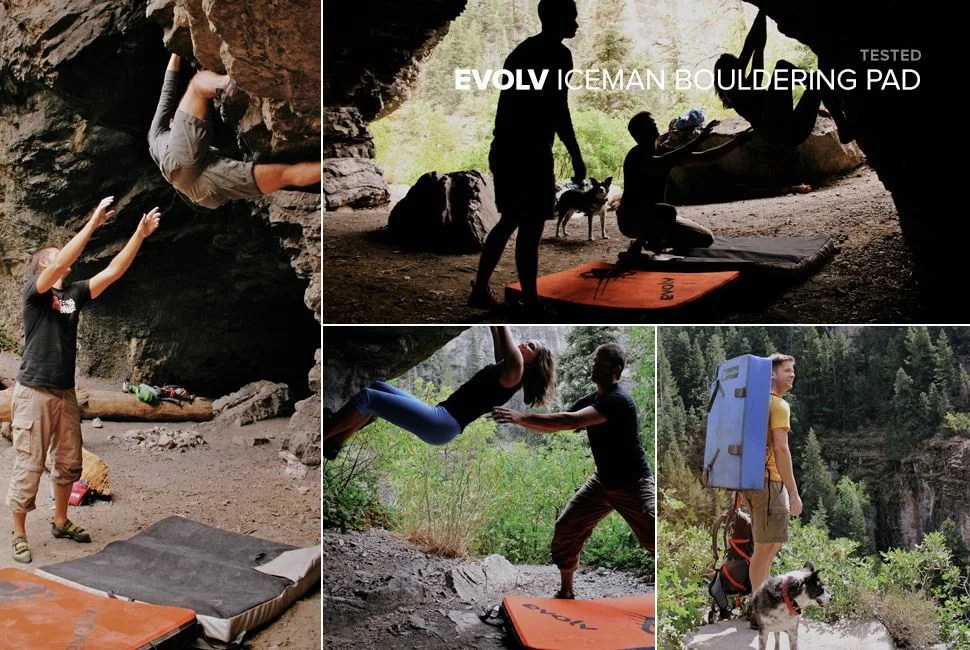Bouldering is a relatively new evolution in rock climbing, and lacking ropes or other protection makes it one of the more dangerous. Bouldering routes, traditionally called “problems”, typically involve fewer than ten hand and footholds and are shorter than comparable sport and trad climbing routes. With steep overhangs and extremely technical moves, you’re going to spend a significant portion of the day falling on your butt, making a good crash pad absolutely essential. While training for the free solo expedition in the Wasatch Range, we had an opportunity to practice bouldering in the limestone caves of American Fork Canyon and the sandstone crags of Moab, where our well-worn Evolv Iceman Crash Pad ($135) was a constant source of support — particularly when we crashed.
MORE GEAR TESTS: Icebreaker Sierra Long Sleeve Zip | Eddie Bauer Arclite Pack | Sage Circa 589-4 Fly Rod
A decent bouldering pad needs only to fulfill one function: cushion every fall. But designing a great bouldering pad is complicated. The best climbing is usually off the beaten path, so portability becomes an issue (unless your idea of fun is carting around an unwieldy lump for hours on end). The Iceman is hinged in the middle, so it folds into a simple backpack, and at just under eight pounds you won’t encounter any problems hauling it all day. When you reach your destination, the shoulder straps easily slide out and some heavy duty velcro straps hold the pad open for maximum surface area.
Durability is also an important consideration, especially when you’ll be dragging your pad over rock, gravel and sand all day. Featuring 1000D and 500D ballistic nylon fabric, this pad will take more than its fair share of abuse. This is crucial if you’re pumping through some limestone cave problems and the pad is taking the punishment from you and the sharp cave floor. Likewise, the closed-cell dense foam lasts much longer than other less rigid pads on the market. The cushioning factor for this foam doesn’t seem to be diminished with this stronger, denser material. We took falls at every height from inches off the pad to nearly twenty feet and the result was the same — a softer fall with no danger of bruises or sprains (provided you’ve got friends you trust spotting to make sure you hit the pad and not the ground).
The only downside to the Iceman’s rigidity is that it’s not as friendly to hauling gear as other pads that can flex to form a pocket for carrying your gear when folded into a pack. There are ways around this. Our solution was to rig a simple nylon sling to the shoulder straps, securing a daypack to the back panel. It’s a minor issue, and overall the Iceman is nearly perfect for all of our bouldering needs, and at a price point that sits at the low end of the spectrum.
It may seem trivial to get into the finer points of foam and fabric, but a bouldering pad is no bouncy castle. In rock climbing, correct use of the right gear is the difference between adventure and injury; if you’re going to spend a weekend tackling problems in Joe’s Valley, Bishop or your local crag, a pad like the Iceman that’s portable, durable and appropriately cushioned makes all the difference.
